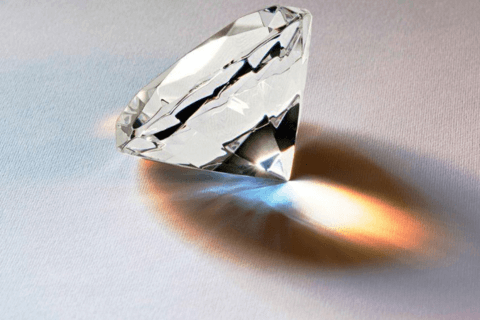Table of Contents
Introduction: Understanding Diamond Grading
When it comes to buying a diamond, you want to ensure you’re making a smart investment. One of the most crucial factors in this decision is understanding diamond grading. A diamond’s grade affects its value, beauty, and even how it fits into your jewelry. In the world of diamond certification, two names often come up: GIA (Gemological Institute of America) and IGI (International Gemological Institute). But what sets these two grading labs apart? Let’s dive into the details and help you decide which one might be the best fit for your needs.
Why Grading Matters
Imagine you’re purchasing a car without knowing its history or condition. Sounds risky, right? The same principle applies to diamonds. Grading provides a benchmark for quality, ensuring you know exactly what you’re getting. It encompasses factors like carat weight, cut, color, and clarity—commonly known as the 4Cs. A credible grading report can give you peace of mind, proving that your diamond is worth the investment.
What is GIA?
History and Reputation
Founded in 1931, GIA has built a solid reputation as one of the most respected grading institutions in the world. Renowned for its rigorous grading standards, GIA is often considered the gold standard in the diamond industry. It was GIA that created the grading system we know today, making it a pioneer in providing trustworthy certification.
Grading Standards and Process
GIA uses a consistent grading process that evaluates each diamond meticulously. Their team of expert gemologists examines every stone using advanced technology and years of training. GIA’s grading reports are detailed and straightforward, covering all aspects of a diamond’s quality, which helps buyers feel confident in their purchase.
What is IGI?
History and Reputation
IGI was founded in 1975 and has since become a key player in the diamond certification industry. While it may not have the same level of recognition as GIA, IGI still holds a strong reputation, particularly in the retail market. Many jewelers trust IGI certifications, making them a popular choice for consumers.
Grading Standards and Process
IGI also utilizes a rigorous grading process, but some critics argue that its standards may be slightly less strict than GIA’s. Nonetheless, IGI employs experienced gemologists who evaluate lab created diamonds using a detailed set of criteria. Their grading reports are comprehensive, providing buyers with essential information about their diamonds.
Comparing GIA and IGI
Differences in Grading Criteria
One of the most significant differences between GIA and IGI lies in their grading criteria. GIA’s standards are considered more conservative, meaning they may assign a lower grade to a diamond compared to IGI. This could lead to higher market values for GIA-certified diamonds.
Consistency and Accuracy
GIA is often praised for its consistency and accuracy in grading. Diamonds that receive a GIA certification generally maintain their value better over time. While IGI also strives for accuracy, the slight differences in grading standards can lead to variances in the perceived quality of diamonds.
Market Recognition and Value
GIA is widely recognized in the industry, and its certificates tend to carry more weight with buyers and sellers alike. If you’re looking to invest in a diamond that retains its value, a GIA certification may be your best bet. On the other hand, IGI certificates are also reputable, especially for those who prioritize budget-friendly options.
Which Grading Lab Should You Trust?
Factors to Consider When Choosing
Choosing between GIA and IGI largely depends on your personal priorities. Are you looking for the highest level of assurance regarding quality? Or are you more concerned with finding an affordable diamond? Knowing what you value most will help guide your decision.
The Importance of Certification for Buyers
Understanding Certification Reports
A diamond certification report provides vital information, such as the diamond’s specifications and grading results. This document serves as a guarantee of the diamond’s quality and value, helping you make an informed decision.
What to Look for in a Certification
When evaluating a diamond certification, ensure it includes comprehensive details about the 4Cs. Additionally, verify that the certificate is from a reputable lab, as this will influence the diamond’s resale value and your overall satisfaction.
FAQs About GIA and IGI
Are GIA and IGI Certificates Interchangeable?
While both GIA and IGI offer reputable grading, their certificates are not interchangeable. A gia vs igi certificate is generally viewed as more prestigious, while an IGI certificate can still provide solid quality assurance.
How Do I Read a Diamond Grading Report?
Reading a diamond grading report can seem daunting at first. Look for sections detailing the 4Cs and check for any additional notes regarding treatments or enhancements. If you’re unsure, don’t hesitate to ask a jeweler for clarification.
What if My Diamond is Not GIA or IGI Certified?
If your diamond doesn’t have a GIA or IGI certification, it doesn’t necessarily mean it’s of low quality. However, it’s crucial to obtain a grading report from a reputable lab to ensure you understand its value.
Conclusion: Making an Informed Choice
When it comes down to GIA vs. IGI, the choice is ultimately yours. Both grading labs have their merits and cater to different market needs. If you’re prioritizing resale value and assurance of quality, GIA might be the way to go. However, if you’re looking for budget-friendly options without sacrificing too much on quality, IGI offers solid alternatives. Whichever you choose, having a certified diamond is a step towards making a wise and informed investment in your jewelry collection. Happy diamond hunting!




